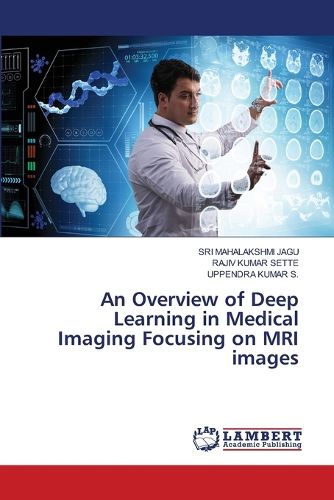Readings Newsletter
Become a Readings Member to make your shopping experience even easier.
Sign in or sign up for free!
You’re not far away from qualifying for FREE standard shipping within Australia
You’ve qualified for FREE standard shipping within Australia
The cart is loading…






This title is printed to order. This book may have been self-published. If so, we cannot guarantee the quality of the content. In the main most books will have gone through the editing process however some may not. We therefore suggest that you be aware of this before ordering this book. If in doubt check either the author or publisher’s details as we are unable to accept any returns unless they are faulty. Please contact us if you have any questions.
Machine learning has seen some dramatic developments recently, leading to a lot of interest from industry, academia and popular culture. These are driven by breakthroughs in artificial neural networks, often termed deep learning, a set of techniques and algorithms that enable computers to discover complicated patterns in large data sets. Feeding the breakthroughs is the increased access to data ("big data"), user-friendly software frameworks, and an explosion of the available compute power, enabling the use of neural networks that are deeper than ever before. These models nowadays form the state-of-the-art approach to a wide variety of problems in computer vision, language modeling and robotics. Deep learning rose to its prominent position in computer vision when neural networks started outperforming other methods on several high-profile image analysis benchmarks. Most famously on the Image Net Large-Scale Visual Recognition Challenge (ILSVRC) in 2012 when a deep learning model (a convolutional neural network) halved the second-best error rate on the image classification task.
$9.00 standard shipping within Australia
FREE standard shipping within Australia for orders over $100.00
Express & International shipping calculated at checkout
This title is printed to order. This book may have been self-published. If so, we cannot guarantee the quality of the content. In the main most books will have gone through the editing process however some may not. We therefore suggest that you be aware of this before ordering this book. If in doubt check either the author or publisher’s details as we are unable to accept any returns unless they are faulty. Please contact us if you have any questions.
Machine learning has seen some dramatic developments recently, leading to a lot of interest from industry, academia and popular culture. These are driven by breakthroughs in artificial neural networks, often termed deep learning, a set of techniques and algorithms that enable computers to discover complicated patterns in large data sets. Feeding the breakthroughs is the increased access to data ("big data"), user-friendly software frameworks, and an explosion of the available compute power, enabling the use of neural networks that are deeper than ever before. These models nowadays form the state-of-the-art approach to a wide variety of problems in computer vision, language modeling and robotics. Deep learning rose to its prominent position in computer vision when neural networks started outperforming other methods on several high-profile image analysis benchmarks. Most famously on the Image Net Large-Scale Visual Recognition Challenge (ILSVRC) in 2012 when a deep learning model (a convolutional neural network) halved the second-best error rate on the image classification task.